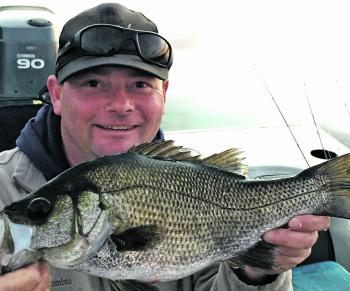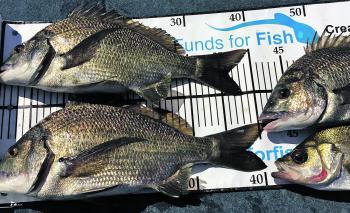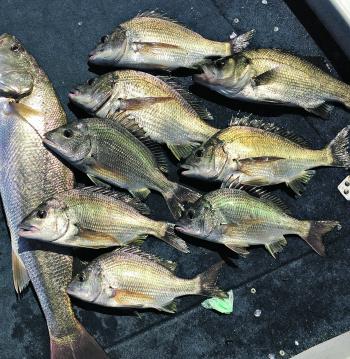May can be one of the best months of the year for fishing in the far southwest of the state as we transition out of autumn into winter. Cooler temperatures and fresh inflows into the rivers signal the start of recruitment and spawning behaviours from most fish species in our estuaries, which means great fishing.
This time of year sees the fish well spread through the river. With inflows starting to increase slightly due to either rains or environmental releases from Rocklands Reservoir we should start to see spawning behaviours begin. In a nutshell this means estuary perch will start to slowly migrate towards the lower section of the rivers, while bream move higher. This will be highly dependant on the amount of water moving down the system. May heralds the beginning of these movements.
Estuary perch will be slowly making their way to the estuary from the higher reaches and should be schooling up in big numbers. May will most likely see the biggest congregations in the mid section of the Glenelg River from around Sapling Creek down as they recruit and migrate. Targeting heavy timber snags with surface or shallow diving lures will be the key in May.
Bream will also be on the move and starting to school up in large numbers out wider of the banks. Fish can often be found out in around 2-4m of water and using your sounder to locate the areas where they are congregating is the key. Often they can be a bit harder to tempt when in this mode. Fishing deep diving hardbodies and soft plastics really slowly, with plenty of long pauses, will usually account for lots of fish. Moving regularly and finding other areas holding fish is the trick and often one or more schools will be keener to bite than others.
The preceding months have seen great mulloway caught and this should only improve through May. A bit of inflow and the water starting to colour up often sees some much bigger fish caught in the Glenelg. From the caves landing and right down to the estuary is the prime section of the river to target. Taylors Strait, Dry Creek and the poles area in the estuary are the most consistent places to target them.
Larger hardbodies and live baits trolled slowly along the drop-off on the edges is a very reliable technique. Throwing larger soft plastics around the 5” size in those key areas is also a very successful way to target the mulloway.
Keep in mind that you can drop off any bagged mulloway frames after you’ve filleted them to the kiosk in Nelson to be collected by Lauren Veale as part of her citizen science research program into the genetics of these elusive fish. This is very valuable research and I’d encourage anyone who’s lucky enough to catch a mulloway to donate the frame to a great cause, if you decide to keep rather than release.
Reads: 1079
Heavy timber snags hold some great estuary perch.

Bream will start to school up in the deeper water.

A Glenelg River mixed bag.




